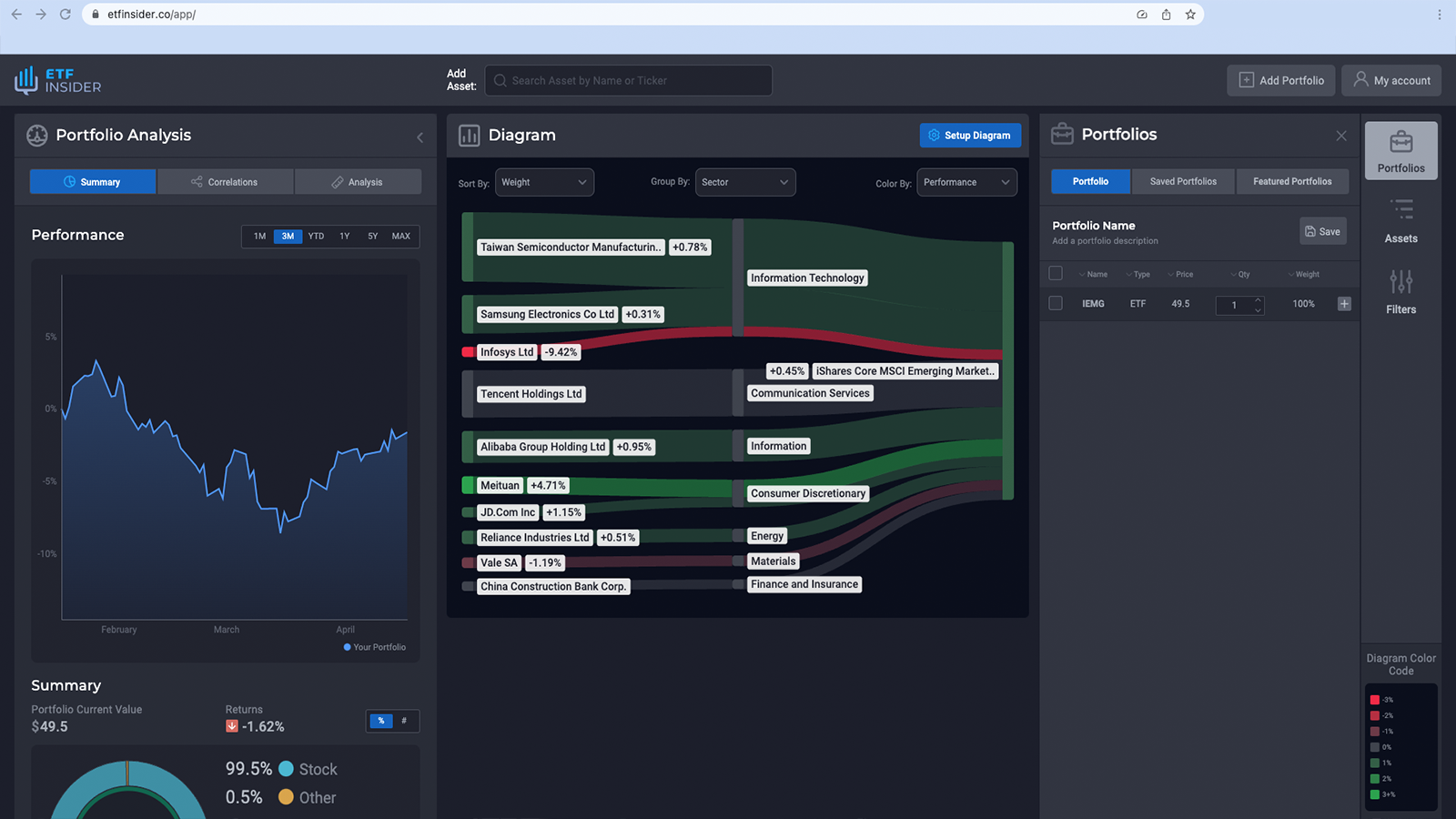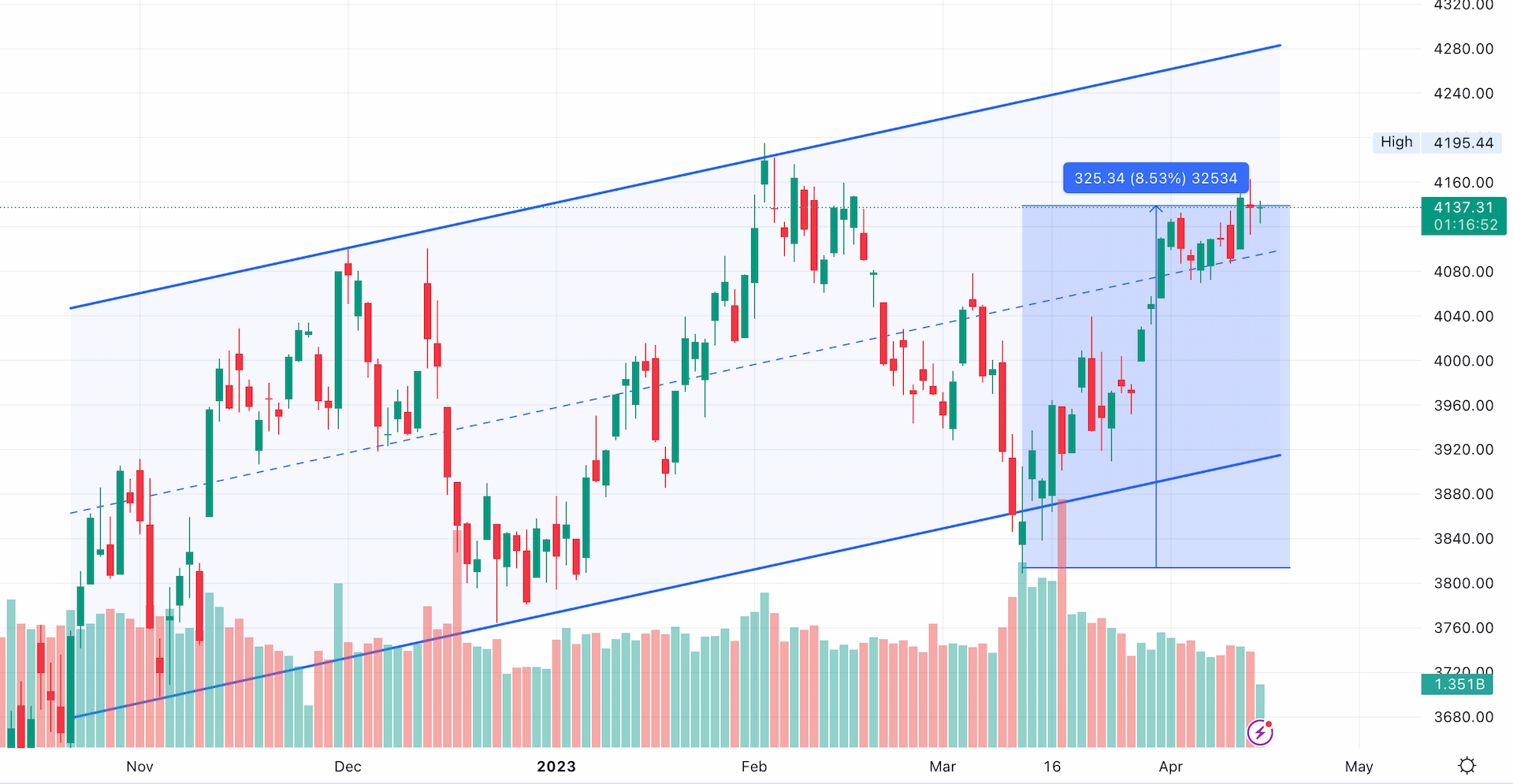
5 Reasons Why the Market Started Going Up
The recent 1-month worth of upward movement from the stock market has created a renewed sense of optimism among investors and analysts alike. To give context, you can see in the chart below that $SPY hit the dreaded level of $3,800 last month. Nevertheless, in just a little over a month, the market is now up by roughly 8.5%.

This incredible pace indicates a significant shift in market sentiment and has clearly sided the bull side, at least for now and for the foreseeable future. With this said, it is important to take a closer look and examine what could be some key factors that contributed to this. Hence, in this article, we will do just that!
1. Better Earnings Data Projection
First and foremost, one of the most compelling arguments for this rapid price increase is that investors now expect better earnings announcements from publicly traded companies.
Historically, the market's move around this time has largely been influenced by the market sentiment around the First Quarter (Q1) earnings.
2. Positive Economic Indicators
Second, some key economic indicators in the first four months of 2023 have shown promising signs of growth. Firstly, unemployment rates have largely decreased to now 3.6%, a much better figure than a concerning 6% in March last year.
In addition, the GDP has also steadily increased for two consecutive quarters now and is forecasted to continue its growth to Q1 this year, further suggesting that the economy is recovering faster than anticipated. Hence, this economic optimism has translated into increased confidence in the market, attracting investors and boosting stock prices.
3. Inflation Control Measures
Thirdly, the CPI data for March, which revealed inflation slowing down to 5%, is also a welcome development as a sign that the aggressive tightening (interest rate hikes) of the US central bank (Fed) is now significantly curbing inflation.
Hence, this gives renewed hope from investors that Fed will cut back on its hike further this year, which has largely been the main reason why market movements have been so conservative. For those who are unfamiliar, interest rates have an inverse relationship with equity investments such as stocks and ETFs. So if interest rates go up, equities suffer.
4. Emerging Market Growth
Fourthly, and perhaps one of the more interesting developments, the solid economic recovery, and growth in emerging markets, such as China, India, and Brazil, has positively impacted the global stock market. These growing economies have drawn foreign investment and created new opportunities for international companies with large business operations in these countries, such as Apple and Amazon.
As a result, businesses exposed to emerging markets have particularly seen their stock prices rise, contributing to the overall positive market movement.
 IEMG ETF (ETF Insider web-app)
IEMG ETF (ETF Insider web-app)
5. The Market is Now Attractive
Finally, investors may have realized that stocks and ETFs were at attractive levels when $SPY was at the $3,800 price level. This may have presented an opportunity to accumulate attractive companies and ETFs at a bargain price.
Hence, after hitting that level and investors realizing some or even all of those aforementioned four previous points, interest has picked up, and a rush of investor interest has resulted in what we are seeing right now — a stock market rally.
Conclusion
At the end of the day, it is important to always remember that these market movements are highly volatile and susceptible to many factors. Hence, before deciding to invest, it is crucial to do our due diligence. Fortunately, there are now sophisticated portfolio management tools, such as ETF Insider, that help you be on the right track of your investing journey by assisting you in optimizing your portfolio according to your unique needs and avoiding common investing mistakes, such as over and under-diversification, overexposure, and fund overlap.
Get started